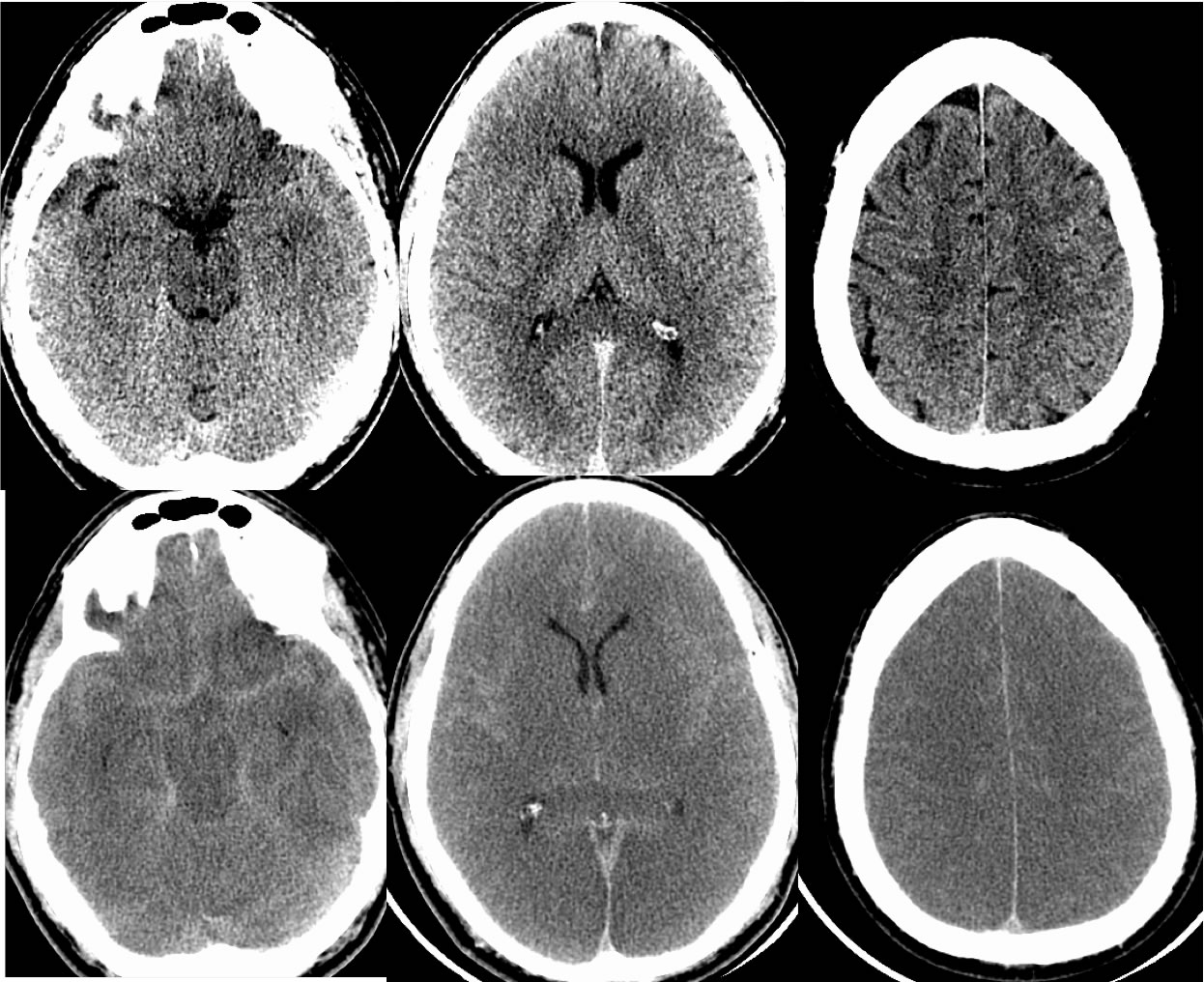
Severe Hypoxic Injury with Cerebral Edema
Findings:
Admission head CT images demonstrate subtle decreased caliber of the third ventricle and subtle reduced grey white differentiation over the convexities at the level of the lateral ventricles. Short-term follow-up CT images demonstrate marked diffuse loss of gray white differentiation. The subarachnoid spaces and dura are hyperdense, with this appearance resulting from accentuation against the background of marked low attenuation brain parenchyma. This is known as a pseudo-subarachnoid hemorrhage sign.
Discussion:
Initial manifestations of anoxic injury may be subtle, but become more obvious over the next few days. Sensitive early signs include subtle mass effect including third ventricular effacement and an overall impression of low brain attenuation when opening the initial study. To the uninitiated, a patient with severe cerebral edema may be misinterpreted to have subarachnoid hemorrhage, but this is related to accentuation of normal meninges and vascular structures against markedly abnormal brain low attenuation. Sometimes if recent comparison studies exist, subtle changes in grey white differentiation and sulcal effacement can be more easily detected.
BACK TO
MAIN PAGE
